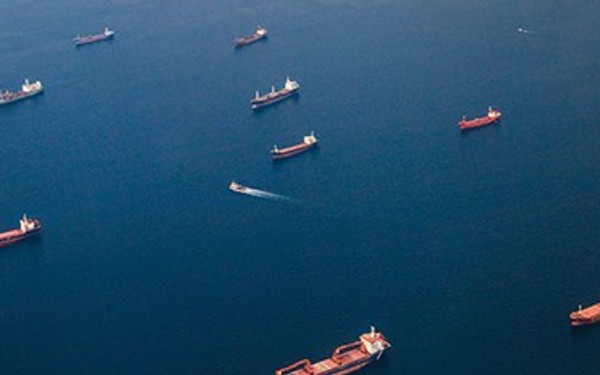How To Futureproof Your Ship For IMO 2020
The first quarter of 2019 is almost behind us, yet the shipping industry remains mired in uncertainty.
In nine months’ time new IMO regulations take effect, limiting the permitted sulphur (sulfur) content of marine fuels to 0.5% m/m.
There’s no getting away from it - IMO 2020 is a massive event.
The new SOx cap will stimulate energy market shifts that will impact multiple industries beyond shipping.
But what these shifts will look like, or whether shipowners will even be ready for them, is still unclear.
The new SOx cap will stimulate energy market shifts that will impact multiple industries beyond shipping.
As James Morgan points out in Hellenic Shipping News, shippers’ fortunes will be determined largely by the demand for and supply of different fuels, specifically high sulphur fuel oil (HSFO), very low sulphur fuel oil (VLSFO) and alternative fuels like liquified natural gas (LNG).
With a current shortage of meaningful data or crystal balls, however, shipowners’ decisions on the best way to comply with IMO 2020 will carry risk regardless of which option they choose.
But operators are not dead in the water.
There are predictable wins available to those who act decisively.
Owners have three choices to ensure compliance:
- Fit an exhaust gas cleaning system (scrubber) that removes SOx and other pollutants from the ship’s exhaust; or
- Switch to VLSFO or a low-sulphur fuel mix; or
- Switch to non-petroleum fuels like LNG
Exploring these options in reverse:
Switching to non-petroleum fuels
Recent research by Woodmac suggests that use of LNG in the maritime industry will increase by 70% between 2019 and 2020, though off a low base. This is partly because LNG is expected to remain substantially cheaper than VLSFO, while competing on price with HSFO.
But there are major limitations in the short term.

Retrofitting costs for an LNG conversion are extremely high, meaning that this technology will apply almost exclusively to newbuilds.
And worldwide LNG bunkering infrastructure is still in its infancy.
So, even if LNG supply is ample, access will be limited.
This is partly why there are currently only 200 LNG-propelled vessels at sea.
Switching to VLSFO
This appears to be the simplest solution. Even accounting for the time and costs of testing different fuel mixes to find an optimal solution, the change from HSFO to VLSFO requires the smallest upfront financial investment.
However, savings on capital expenditure could be significantly outweighed by operational costs.
HSFO prices are expected to drop after January next year, while premiums are expected to rise for 0.5% VLSFO and 0.1% MGO. 2020 price differentials are a matter of wild speculation, but any operator switching from HSFO to VLSFO can expect to pay significantly more to stay in the game.
VLSFO supply is a major concern.
The shipping industry may need to replace up to 3 million barrels per day (bpd) of HSFO with VLSFO or MGO.
But, global supply of VLSFO is estimated to only increase to 1.4 million barrels per day in 2020 and to 1.7 million bpd in 2024. In such a demand-heavy environment freight and charter prices will only go one way.
The consequent rise in refining margins may be good news for refineries – especially those that can convert heavy residual fuel to lighter, more sought-after products – but even as they ramp up production, supply deficits may be a reality for some time.
In such cases, fuel oil non-availability reports (FONARs) may not free operators from accountability.
Shipping authorities are still unclear on whether vessels carrying FONARs will be fined for non-compliant fuel.
Fitting a scrubber
A recent DNB Markets report shows that scrubbers are increasingly in demand.
The number of installations is expected to reach 3700 by the end of 2020.
This is despite the fact that many installations take almost a year, so some shipowners ordering a scrubber today might not be ready for January 1.
The benefits may be worth waiting for.
Though scrubbers represent a large capital investment, the payback times can be extremely short - less than one year for larger vessels.
In a VLSFO supply-deficiency scenario, higher price differentials between VLSFO and HSFO would mean even shorter payback times.
Concerns that HSFO supplies will also be limited seem exaggerated. DNB puts the scrubber-carrying percentage of the 94,000-strong world fleet at 3.8% by 2020.
DNB puts the scrubber-carrying percentage of the 94,000-strong world fleet at 3.8% by 2020.
This is a small fraction, but on DNB’s calculations it will account for 21% of HSFO consumption – more than sufficient to secure reliable stock levels.
In these uncertain times, scrubbers offer a valuable commodity: confidence.
The fuel supply and demand picture for 2020 looks to stay hazy for some time, so operators waiting for a clear answer are already falling behind.
Exhaust gas scrubbers give shipowners a way to futureproof themselves.
Regardless of what happens with VLSFO supply, vessels with scrubbers will be compliant and immune to the vagaries of VLSFO/MGO price fluctuations.
Of course, HSFO prices will not stay static, but they will remain lower than these major alternatives and give owners operational piece of mind.
As IMO 2020 approaches, immediate full compliance is unlikely. Woodmac estimates industry compliance with the new regulations to be 85% next year, rising to 100% in 2025.
Consequently, some believe that the Marine Environment Protection Committee’s meeting in May 2019 will produce an agreement on a phased-in implementation.
But waiting for the outcome of this meeting is another risky delay.
Change is coming.
It is unavoidable.
Those that benefit the most will be those who’ve moved early and used uncertainty to their advantage.
Would you like to discuss more?
Our global team of advisors with years of combined experience in the marine sector are on hand to discuss your project.